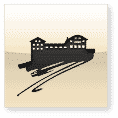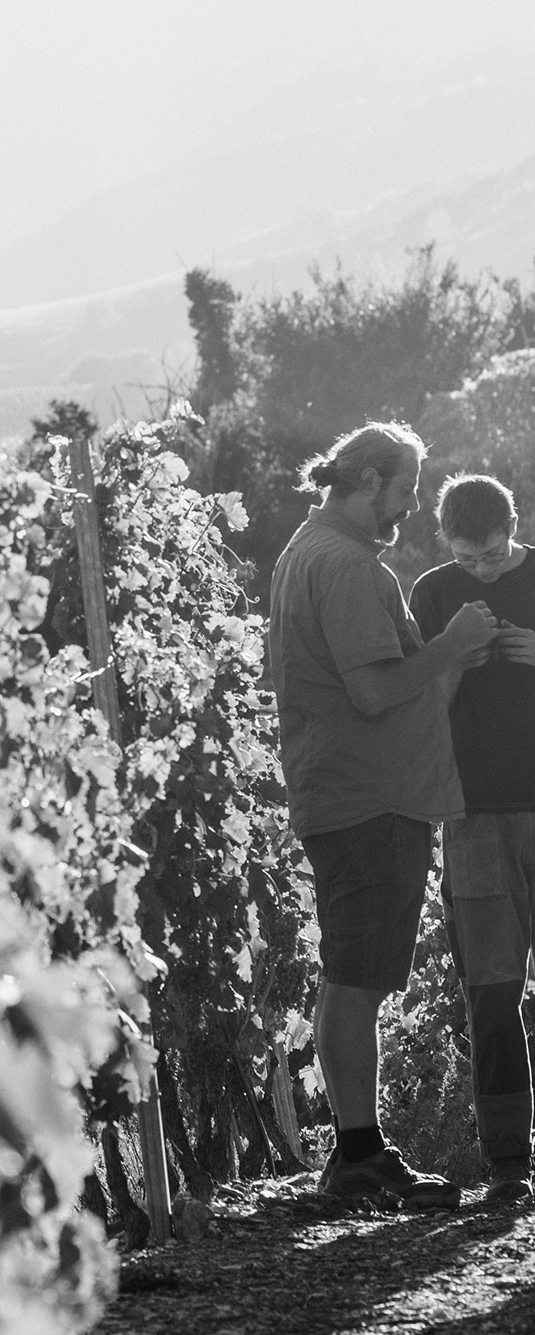Amphora blanc: in vino qvevritas
Fashions come and go – even in viticulture. Organically or biodynamically produced crops are currently in high demand. It is not only in the vineyard without all kinds of chemicals. In the cellar, too, they try to use as few aids as possible, such as sulfur, and to intervene as little as possible in the vinification process. But for some winemakers, this method of production is still not enough. They go one step further and leave the wine more or less to itself. The natural wine is (re)born – although there is no legal definition for it.
In its most radical form, the natural wine process takes place in bulbous clay amphorae called qvevris. In Vino Qvevritas instead of Vino Veritas: the truth is not only in the wine, but also in these ancient containers. They originate from Georgia, where supposedly the wine was invented. Not much happens in the production: the grapes are pressed. Must and marc are placed in buried amphorae, which remain open during fermentation, which lasts about two weeks. After that, close the container. In spring, the winemaker usually takes the first wines from the amphora. During the vinification under the ground sediments have settled on the ground. One then bottles the wine, more or less clear. For white examples, the term Orange Wine is used.
Admittedly, it may not be surprising that amphora wines polarize. They have nothing in common with conventionally produced crops. The smell and taste are strange and take some getting used to. One looks in vain for fruit-emphasized examples. Rather, the wines are impressively different: more straightforward, more archaic, more exciting, more lively, endowed with a novel spectrum of aromas. However, not all that glitters is gold. One finds on the market a fairly high number of growths that appear to be microbiologically dubious, oxidized through or, in extreme cases, have significant off-flavors. Since wine is and remains a stimulant in any case, such crus really have no place there – no matter how original and organic they are pressed. Reliable producers, however, manage to prepare, with the least possible intervention in the vineyard and cellar, a different, not everyday kind of wine than we commonly drink.
The Valais wine house Mathier also wants to provide a different approach to wine. It has a number of Qvevris in different sizes from 250 to 2500 liters for several years. The producer is considered a pioneer in this style of wine in this country and is convinced that aging in amphorae is a valuable asset. The test: the Amphore® blanc 2017. Orange Wine is a wine made from white grapes with a prolonged maceration during fermentation. Made from the native grape varieties Ermitage and Rèze, the wine remains in the amphorae for one year and is then aged in double barriques for another two years. Sulfur is not used. Filtration is not used.
The result in the glass is an independent, unusual wine that is worth approaching. Even the color is striking: an intense yellow that tends towards orange. The wine is relatively clear and only slightly cloudy. The nose reveals a complex aroma with herbal-spicy notes and subtle hints of tea. On the palate, the exceedingly present but well-integrated tannins stand out in the youthful Cru. Amphore® blanc is powerful, complex and with a ripe acidity that accompanies the wine until the long finish. It is best used as a food accompaniment. Even in the face of red meat, this Valais specialty, which has an excellent aging potential of several years, easily holds its own.
Viticulture thrives on innovation. Amphora wines undoubtedly belong to this category. They are certainly an enrichment for both the spoiled and the curious palate. But fermentation in qvevris, as it was done a few thousand years ago, especially on the Black Sea, is an extreme way of vinification. And probably also a response to the fact that in the past too much has been tampered with the wine, and too many technical means have been used in the cellar. Round, sweet drops may appeal to a wide range of buyers, but they are boring after one glass at the latest. Wines with corners and edges promise more variety and enjoyment – such as the Amphore® blanc 2017



